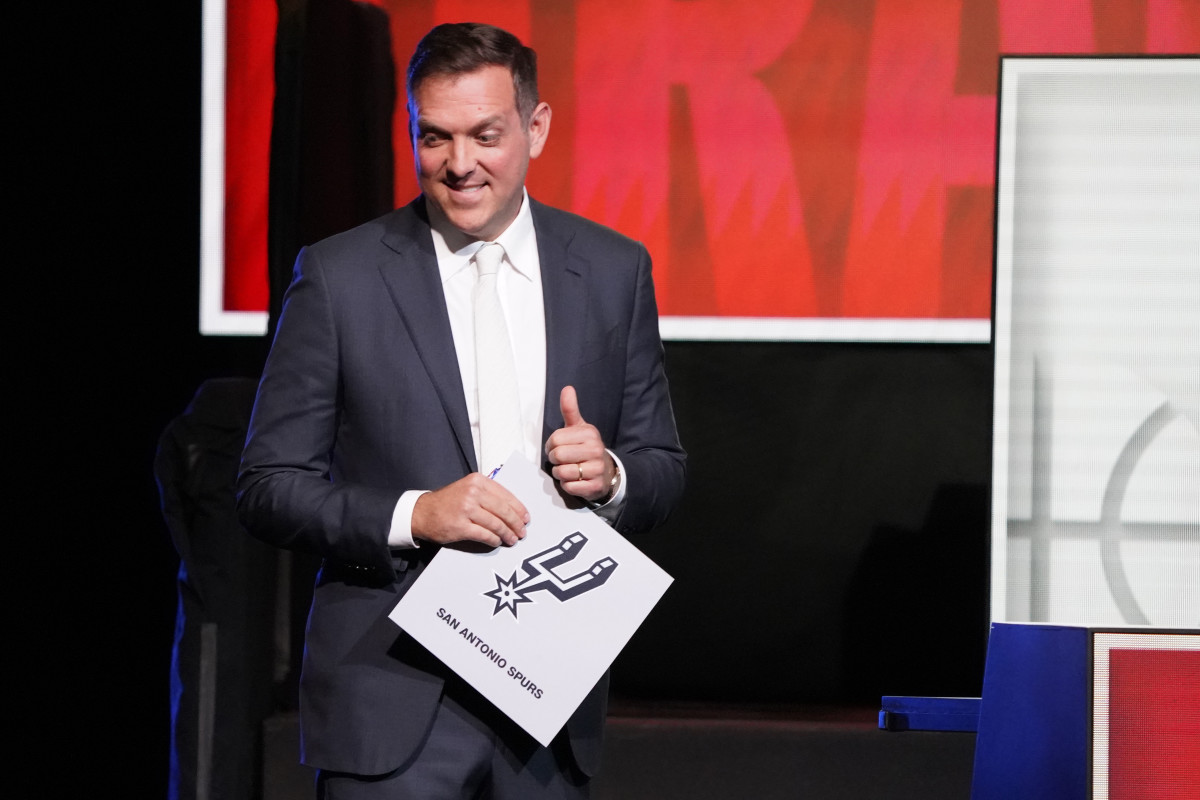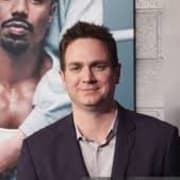The Vibe Inside the NBA Draft Lottery Room When the Spurs Landed the Top Pick

Even after the winning numbers popped up, after Jamin Dershowitz, the NBA lawyer charged with locating the winning combination of Ping-Pong balls on one of eight poster boards inside a sealed-off ballroom on the first floor of McCormick Place announced “San Antonio,” Brian Wright didn’t flinch. No clap, no fist bump. Certainly not the two-handed table slam and excited roar his boss, Spurs managing partner Peter Holt, let out after San Antonio’s placard was revealed on ESPN an hour later. In the moment the franchise was changed forever, the Spurs GM was motionless.
“I’m like a duck swimming on water,” Wright told a handful of notebook-scribbling reporters later, noting the frantic foot movement underneath a calm exterior. “That’s what it feels like on the inside.”
The NBA draft lottery has become one of the league’s most compelling events, a made-for-TV drama out of which the NBA is only so happy to squeeze a few ratings points. Each year, representatives from the 14 lottery teams are positioned on a stage where the draft order is revealed. The actual lottery takes place earlier, behind closed doors, in an electronics-free room where 14 other team reps sit behind three rows of tables while Ping-Pong balls are drawn to determine the top four picks.
In an effort to curb conspiracy theories—frozen envelopes, bent envelopes, neverending grumbling over how a pair of No. 1 picks (LeBron James, Derrick Rose) found their way onto hometown teams—the NBA has gone to great lengths to preserve the integrity of the process. The balls themselves arrive in a zip-tied, sealed case. Officials from Ernst & Young, a respected professional services company, oversee the process. Matt Doria, an NBA VP, is charged with retrieving each ball from the custom-made clear plastic cylinder, but only after another NBA executive, Micah Day, who stands with his back to the drawing, motions every 10 seconds for him to pull a new one. Observing the process are 19 media members—Sports Illustrated was one of them Tuesday evening—all of whom are required to check their phones, Apple watches and any other communication devices at the door.
It's tense, more so this year considering the top prize: Victor Wembanyama, the 19-year-old, French-born phenom considered by all to be the best prospect since LeBron James and, by many, to be better. For months, NBA execs have drooled over Wembanyama’s potential, over his Giannis Antetokounmpo–like frame, his Dirk Nowitzki–style jumper, his Dikembe Mutombo–esque defensive potential. On ESPN, plugged-in insider Adrian Wojnarowski reported that NBA types believe Wembanyama could be the league’s top offensive and defensive player by his third season.

“I can’t compare him to anyone,” texted a longtime NBA scout. “He’s like a combination of the best parts of every great player. He’s the perfect prospect.”
Just past 7 p.m. local time, after a brief introduction from NBA president of league operations Byron Spruell, the balls were set in motion. There are 1,001 possible four-number combinations, with 1,000 of them assigned to the 14 teams. The three teams that finished with the worst records—Detroit, Houston and San Antonio—held 140 possible combinations, giving each a 14% chance of landing the top pick. From there, it’s a descending order, down to New Orleans, which entered the drawing room with a 0.5% chance of securing the No. 1 selection.
As the balls rattled around the air-pressured cylinder—the league, of course, had a backup cylinder on standby in case this one failed—the nervous foot-tapping began behind the tables. Joel Glass, Orlando’s longtime PR czar, is a drawing room veteran. “Unfortunately,” Glass said. On Tuesday, Glass carried in a dark case containing the 10 ping pong balls that resulted in the Magic’s four lottery wins, including last season, when the Magic scored the top pick. It had been 31 years since Orlando won the rights to draft Shaquille O’Neal, the first of back-to-back No. 1 picks, Glass noted. Perhaps lottery luck would strike again.
Within minutes, the drawing began. 14 … 5 … 8 … (After each number, team reps frantically scanned spreadsheets with possible combinations in front of them. Oklahoma City had two of the first three numbers. Washington had three.) … 2, announced Doria. San Antonio had its man.
If there was a storybook franchise for Wembanyama to land with, it’s San Antonio, an organization that was a pioneer in the NBA’s international movement and career-long home for some of the league’s top foreign talent. Manu Ginobili. Tony Parker. In 1997, after an injury-plagued 20-win season, the Spurs secured the top pick to draft Tim Duncan, a Saint Croix–born big man, and kick-started a decades-long dynasty. In Wembanyama, San Antonio scored another transformative big man to build around.
“I might faint,” Holt said. “We’re so excited.”
With the top pick off the board, the lottery continued. 7 … 3 … 5 … 4 … Charlotte. Buzz Peterson, a Hornets VP, smiled. The Hornets missed the playoffs for the seventh straight season and have not made the second round since 2002. They have yet to reach a conference final. LaMelo Ball, the third pick in ’20, has injected life into the franchise. Another high lottery pick—Scoot Henderson and Brandon Miller are the top candidates—could make the, er, Buzz relevant.
The Ping-Pong balls kept whirring. 11 … 3 … 9 … 6 … Portland. More smiles, this time from Sergi Oliva, the Blazers’ assistant general manager. Portland has been in a steady decline since advancing to the Western Conference finals in 2019. The team was bounced in the first round in each of the next two seasons and missed the postseason in the next two. A top-three pick offers hope.
Portland will have an interesting decision to make. Damian Lillard, the franchise cornerstone, will undoubtedly prefer for the Blazers to trade the pick for more experienced talent. But as loyal as the franchise has been to Lillard—a loyalty that has been consistently reciprocated—this could present an opportunity for Portland, and Lillard, to move on. The market for Lillard, should the Blazers explore it, will be robust. New York will be interested. Philadelphia, too. A treasure chest of young talent will be available. The time to rebuild might be now.
Finally, the fourth pick. 13 … 14 … 1… 11. San Antonio, again. 3 … 4 … 9 … 7. Charlotte, again. 2 … 12 … 7 … 3. The Spurs … again. An amused chuckle rippled through the room. 7 … 14 … 4 … 1. Houston. The Rockets, a listless, seemingly culture-less organization the past three seasons, had high hopes on lottery night. Now, Houston’s traveling party, which included new coach Ime Udoka, heads home with the challenge of finding the right complement to its past two lottery picks, Jalen Green and Jabari Smith Jr.
When the drawing ended, the waiting began. An Ernst & Young rep, accompanied by NBA security, removed the sealed envelopes and was whisked out the door. Until the televised drawing is over, no one else is permitted to leave. Team officials and reporters chewed on turkey sandwiches and made small talk while the on-camera drama played out. Michael Finley, Dallas’s rep, breathed a sigh of relief. The Mavs stayed in the 10th spot, preventing the pick from conveying to New York. Pat Connelly, a Bulls exec, sat quietly as Chicago landed at 11, which meant Orlando inherited the rights to it.
When the top pick was revealed, the doors flung open. A stampede of wired-in people raced for their phones.
Only one seemingly exited the room happily.
Even if he didn’t show it.
